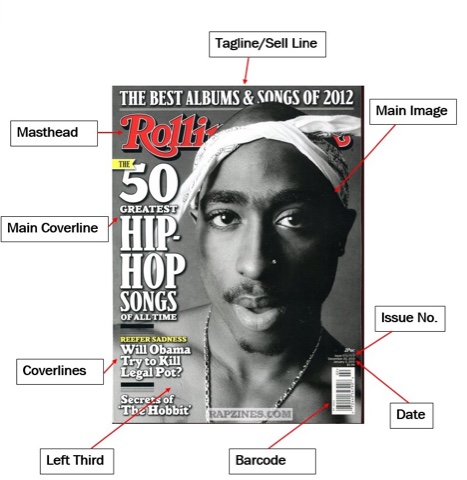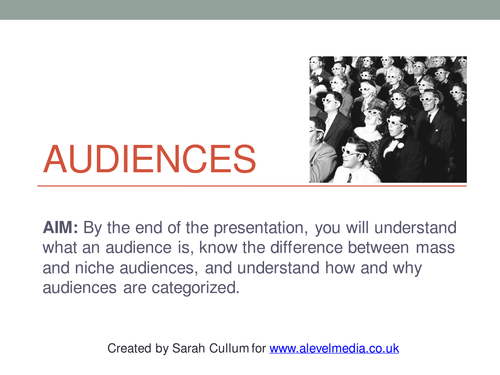Key Concepts of Media Studies.
1 - Convention

Media conventions are rules or generally accepted ways of combining codes to create form and meaning within a media production. Examples of media conventions are (described in the Media Study Design as) story principles, form and structure, generic structures, character and story arcs, cause and effect, point of view, the structuring of time, elements of page layout, paper stock for print, titles and credits sequences, hyperlinking and mounting and framing of images.
Codes and conventions are used together in any study of genre – it is not enough to discuss a technical code used such as camera work, without saying how it is conventionally used in a genre. For example, the technical code of lighting is used in some way in all film genres. It is a convention of the horror genre that side and back lighting is used to create mystery and suspense – an integral part of any horror movie. Examples of conventions include the foreshortening of time in a TV program so that the narrative is introduced, developed and resolved in 50 minutes. The use of cliff-hanger endings in a soap opera. Bold text and a large font in a newspaper headline to indicate the importance of a story. Underlying hyperlinks on a web-page. A radio personality fare welling the audience with ‘Goodnight and see you tomorrow’ as a tool for constructing a representation of a personal relationship with the audience.
https://youtu.be/gmhX_a5xwZs
2 - Institution

Institutions are a wide ranging area and the relevant factors are very specific to the text being made.
As a general definition of the terms above we could say that:
Internal factors generally relate to the process of creating the text. This is text dependent
and the internal factors that impact on a movie are different to those that impact on a print
text or radio and so on. This will largely involve looking at such issues as available
technology, time and resources, budgets, cast and crew.
External factors generally relate to the context in which the text is produced. Again this is
text dependent and the external factors that impact on a movie are different to those that
impact on a print text or radio and so on. This will involve considering such things as
location, legal and voluntary controls, health and safety, school/college rules and
regulations.
The basis of institution in Media Studies is that all texts are produced within an institutional context. For example a TV drama will begin either as a commissioned (asked for) work or as an non-commissioned work (just written by a hopeful would-be TV scriptwriter). Once it is written aProduction Company who will in turn offer it out to a TV Company for broadcast will then produce it. This sounds quite straightforward, but it isn't. The product, like all products has to be SOLD at ALL LEVELS of the process. The product (whatever it is) has also got to be economically viable (that means it has to be able to make money). If the production costs are bigger than the returns, that is if it costs more to make than the profit it will generate, then the product might never get to the production stage. That is why 'pilots' (test broadcasts) are used on TV, to test 'returns' (viewing figures) to see if the show has 'potential'. If the returns are promising, then it has a chance of being profitable and the series might be given the go-ahead.
Convention
Institution
Audience
Representation
1 - Convention

Media conventions are rules or generally accepted ways of combining codes to create form and meaning within a media production. Examples of media conventions are (described in the Media Study Design as) story principles, form and structure, generic structures, character and story arcs, cause and effect, point of view, the structuring of time, elements of page layout, paper stock for print, titles and credits sequences, hyperlinking and mounting and framing of images.
Codes and conventions are used together in any study of genre – it is not enough to discuss a technical code used such as camera work, without saying how it is conventionally used in a genre. For example, the technical code of lighting is used in some way in all film genres. It is a convention of the horror genre that side and back lighting is used to create mystery and suspense – an integral part of any horror movie. Examples of conventions include the foreshortening of time in a TV program so that the narrative is introduced, developed and resolved in 50 minutes. The use of cliff-hanger endings in a soap opera. Bold text and a large font in a newspaper headline to indicate the importance of a story. Underlying hyperlinks on a web-page. A radio personality fare welling the audience with ‘Goodnight and see you tomorrow’ as a tool for constructing a representation of a personal relationship with the audience.
https://youtu.be/gmhX_a5xwZs
2 - Institution

Institutions are a wide ranging area and the relevant factors are very specific to the text being made.
As a general definition of the terms above we could say that:
Internal factors generally relate to the process of creating the text. This is text dependent
and the internal factors that impact on a movie are different to those that impact on a print
text or radio and so on. This will largely involve looking at such issues as available
technology, time and resources, budgets, cast and crew.
External factors generally relate to the context in which the text is produced. Again this is
text dependent and the external factors that impact on a movie are different to those that
impact on a print text or radio and so on. This will involve considering such things as
location, legal and voluntary controls, health and safety, school/college rules and
regulations.
The basis of institution in Media Studies is that all texts are produced within an institutional context. For example a TV drama will begin either as a commissioned (asked for) work or as an non-commissioned work (just written by a hopeful would-be TV scriptwriter). Once it is written aProduction Company who will in turn offer it out to a TV Company for broadcast will then produce it. This sounds quite straightforward, but it isn't. The product, like all products has to be SOLD at ALL LEVELS of the process. The product (whatever it is) has also got to be economically viable (that means it has to be able to make money). If the production costs are bigger than the returns, that is if it costs more to make than the profit it will generate, then the product might never get to the production stage. That is why 'pilots' (test broadcasts) are used on TV, to test 'returns' (viewing figures) to see if the show has 'potential'. If the returns are promising, then it has a chance of being profitable and the series might be given the go-ahead.
https://www.youtube.com/watch?v=_FOdqQstUxM
3 - Audience

A media audience may be as small as one person reading a magazine or as large as billions of people around the world watching events, like 9/11, unfold live on television. Audiences have a complex relationship with the products they consume. Media producers intend audiences to read their product in a certain way, but in actual fact everyone 'reads' and enjoys a product differently due to the individual's background and lifestyle. Media audiences may be consuming different types of media at any one time (such as listening to an iPod, watching TV, chatting on the Internet) and be engaging at different levels – for example, the television may be turned on whilst a family has dinner. Media consumers are organised into identified groups (based on such things as lifestyle or earning power) by producers, broadcasters, and advertisers who can then target consumers. To media producers, the audience is important because without an audience there would be no media. It is important for them in order for them to be successful. Companies are set up to carry out audience research for media producers to see how many people would be interested.
4 - Representation

Media representations are the ways in which the media portrays particular groups, communities, experiences, ideas, or topics from a particular ideological or value perspective. Rather than examining media representations as simply reflecting or mirroring "reality," we examine how media representations serve to "re-present" or to actually create a new reality. In Media Studies was developed the Representation Theory. Media Representation Theory refers to the construction in any medium (especially the mass media) of aspects of 'reality' such as people, places, objects, events, cultural identities and other abstract concepts. Such representations may be in speech or writing as well as still or moving pictures. Inside Media representation we have sub-topics such as, Construction (The process everything goes through before it reaches an audience), Stereotypes (Simplified representation of a person, groups of people or a place, through basic or obvious characteristics - which are often exaggerated), ideology (ideas and beliefs, held by media producers, which are often represented in their media texts) and etc. In other medias such as print based media texts representation is constructed using: Layout and Design, Language and Mode of Address, Camera shots and angles in any photographs, Visual codes, and Anchorage.
https://www.youtube.com/watch?v=fOecpti7Qf8
3 - Audience

Audience from Andy Wallis
A media audience may be as small as one person reading a magazine or as large as billions of people around the world watching events, like 9/11, unfold live on television. Audiences have a complex relationship with the products they consume. Media producers intend audiences to read their product in a certain way, but in actual fact everyone 'reads' and enjoys a product differently due to the individual's background and lifestyle. Media audiences may be consuming different types of media at any one time (such as listening to an iPod, watching TV, chatting on the Internet) and be engaging at different levels – for example, the television may be turned on whilst a family has dinner. Media consumers are organised into identified groups (based on such things as lifestyle or earning power) by producers, broadcasters, and advertisers who can then target consumers. To media producers, the audience is important because without an audience there would be no media. It is important for them in order for them to be successful. Companies are set up to carry out audience research for media producers to see how many people would be interested.
4 - Representation

Media representations are the ways in which the media portrays particular groups, communities, experiences, ideas, or topics from a particular ideological or value perspective. Rather than examining media representations as simply reflecting or mirroring "reality," we examine how media representations serve to "re-present" or to actually create a new reality. In Media Studies was developed the Representation Theory. Media Representation Theory refers to the construction in any medium (especially the mass media) of aspects of 'reality' such as people, places, objects, events, cultural identities and other abstract concepts. Such representations may be in speech or writing as well as still or moving pictures. Inside Media representation we have sub-topics such as, Construction (The process everything goes through before it reaches an audience), Stereotypes (Simplified representation of a person, groups of people or a place, through basic or obvious characteristics - which are often exaggerated), ideology (ideas and beliefs, held by media producers, which are often represented in their media texts) and etc. In other medias such as print based media texts representation is constructed using: Layout and Design, Language and Mode of Address, Camera shots and angles in any photographs, Visual codes, and Anchorage.
https://www.youtube.com/watch?v=fOecpti7Qf8
Comments
Post a Comment